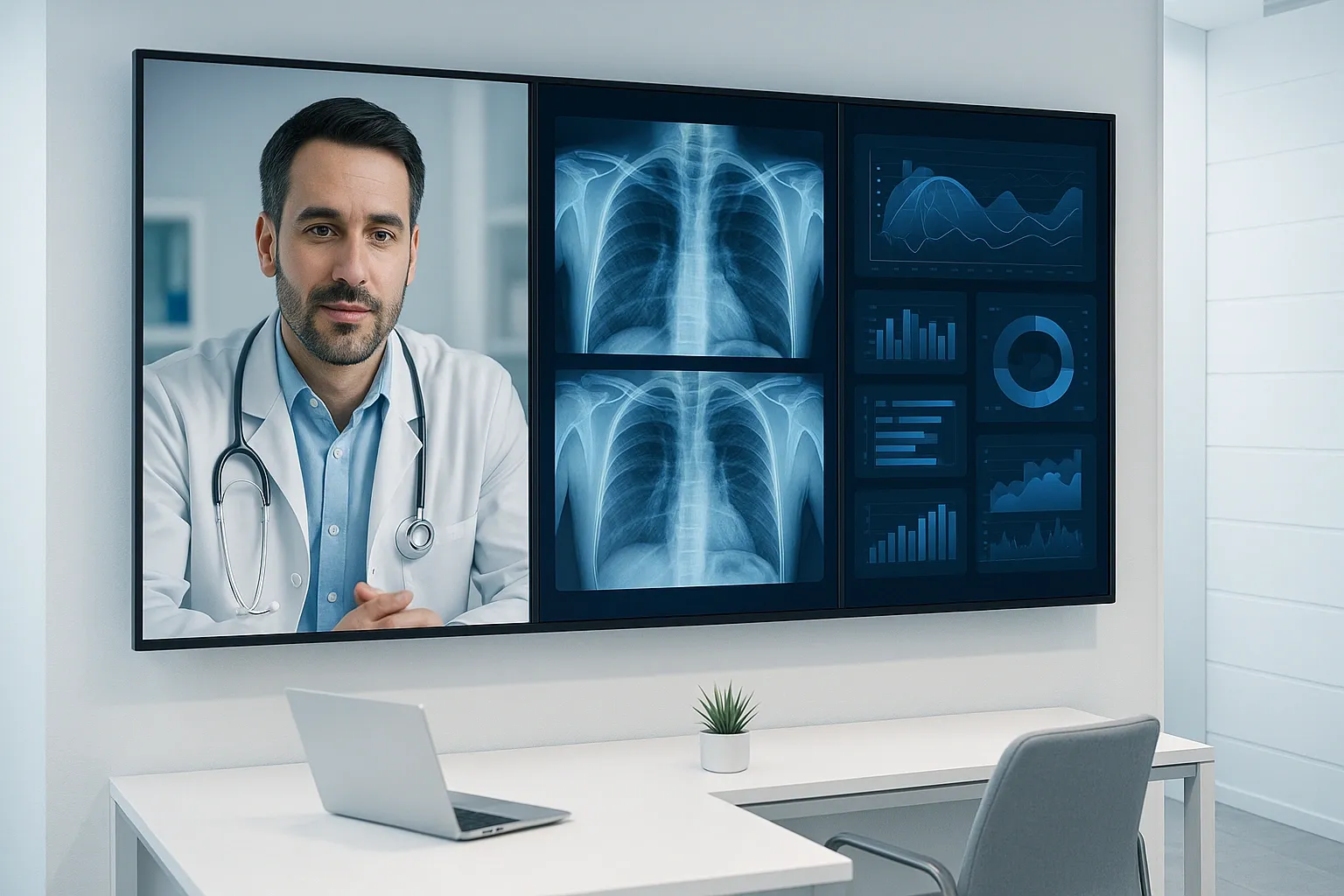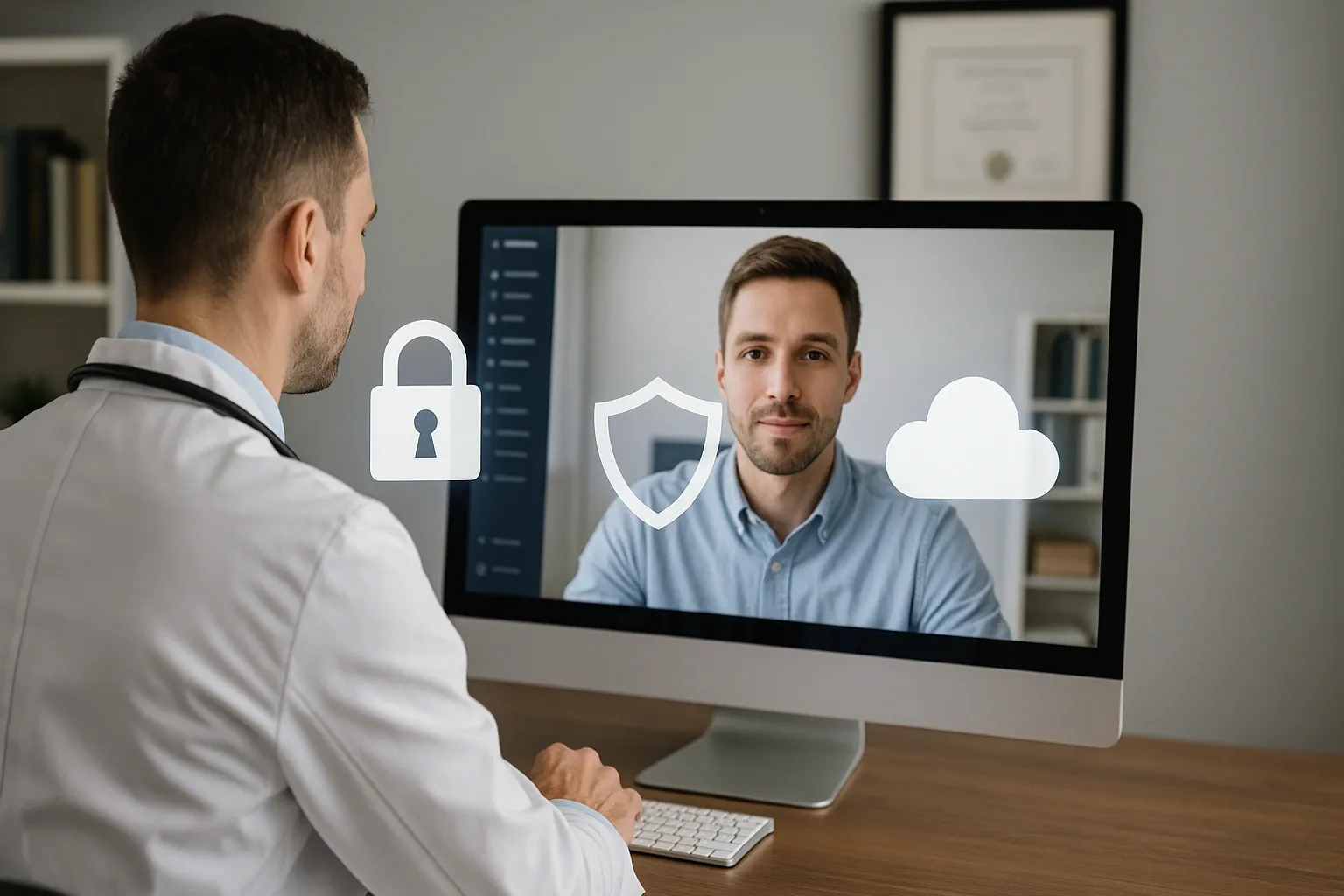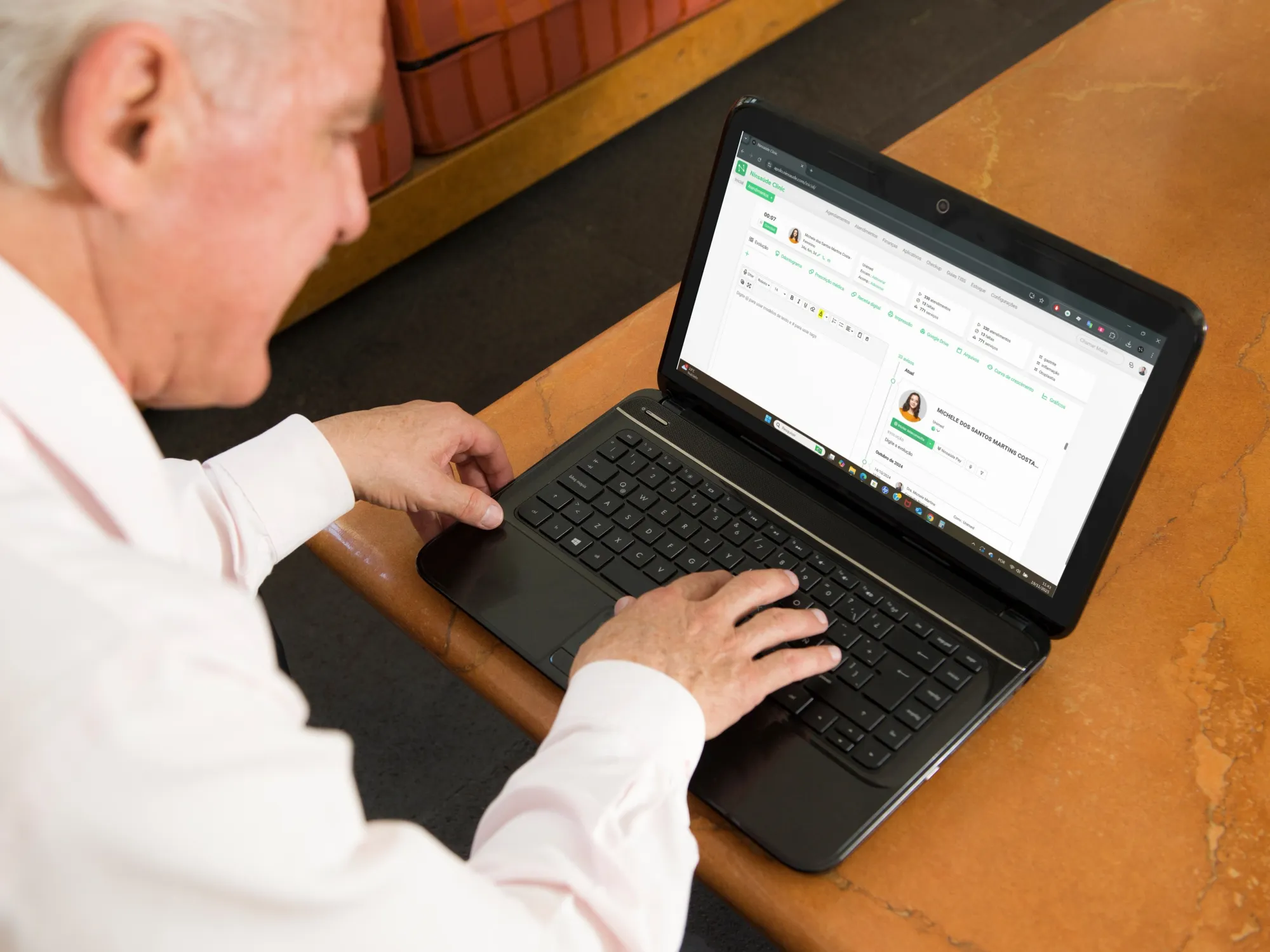
Digital transformation in healthcare is no longer a trend — it’s a permanent shift. If medical care once depended almost entirely on in-person visits, today patients and providers rely on a robust digital infrastructure to deliver online consultations that expand access, strengthen continuity of care, and offer greater convenience. Public acceptance has grown rapidly, fueled by necessity but sustained by clear benefits: efficiency, flexibility, and improved patient engagement.
In this landscape, telemedicine evolved from an emergency alternative into a strategic care model. Physicians, clinic administrators, and patients now recognize the value of online appointments when they are conducted safely, technically sound, and fully aligned with U.S. regulations. In this article, we’ll explore how to conduct an online medical visit, clarify core telemedicine terms, and show how medical software like Ninsaúde Clinic supports providers in delivering secure, high-quality virtual care.
Before we continue, we need to ask: Are you already familiar with Ninsaúde Clinic? Ninsaúde Clinic is an intelligent software designed to simplify clinical management — combining an agile schedule, legally valid electronic health records, telemedicine, and complete financial control in one platform. Discover how Ninsaúde Clinic transforms daily operations and enhances patient care.

How the Pandemic Transformed Telemedicine in the U.S.
The COVID-19 pandemic was a turning point. Within months, telemedicine shifted from a niche option to the primary method used to maintain access to healthcare. Emergency federal measures expanded reimbursement, loosened geographic restrictions, and authorized virtual care across multiple specialties — allowing millions of Americans to continue treatments and receive clinical guidance remotely.
Even after the public health emergency ended, telemedicine remained embedded in everyday practice. Providers saw advantages in chronic-care follow-ups, behavioral health, medication management, and routine check-ins. Clinics also reported lower no-show rates, greater schedule flexibility, and expanded patient reach. What began as a temporary solution became a long-term standard of care.

Telemedicine vs. Telehealth, Teleconsultation, Tele-reports, and Other Key Terms
Telemedicine
A broad term referring to the delivery of clinical services using digital technologies. It includes virtual visits, remote diagnostics, clinical discussions, and digital transmission of medical data.
Telehealth
More expansive than telemedicine. Includes clinical and non-clinical services such as patient education, administrative meetings, and remote monitoring programs.
Teleconsultation (Online Medical Visit)
A live, virtual appointment between physician and patient via secure video. The provider evaluates symptoms, discusses treatment plans, prescribes medications, and orders tests — just as in an in-person visit.
Tele-report (Teleradiology / Tele-interpretation)
Remote interpretation of medical images and diagnostic tests such as X-rays, CT scans, MRIs, and ultrasounds, with the clinical report delivered digitally.
Remote Patient Monitoring (RPM)
Continuous monitoring of chronic conditions using connected medical devices that transmit health data directly to the care team.
Teletriage
Virtual first-contact to assess needs, determine urgency, and direct the patient to the appropriate level of care.
These distinctions help physicians and clinic administrators structure proper workflows and comply with federal and state regulations.

How to Conduct an Online Medical Visit Safely
A successful teleconsultation requires more than a video camera. Security, clinical quality, documentation, and patient privacy are essential. To ensure a safe and compliant appointment, consider the following guidelines:
Use secure medical software
Virtual visits should never take place on consumer videoconferencing apps. Instead, they must be conducted through medical software designed for clinical use, with:
- HIPAA-compliant encryption
- Access-control safeguards
- Secure data transmission
- Audit trails
This protects the patient’s medical information and protects the clinic from legal risk.
Create a private, appropriate environment
Both physician and patient should be in a quiet, well-lit, private space. Audio and video clarity directly impact clinical assessment and documentation quality.
Check equipment and connection quality
Before starting the appointment, test:
- camera
- microphone
- internet stability
A smooth experience reduces communication errors and ensures complete clinical notes.
Follow a structured clinical workflow
Even though the visit is remote, the process mirrors an in-person consultation:
- confirm patient identity
- conduct thorough history-taking
- evaluate symptoms
- provide treatment guidance
- document everything in the Electronic Health Record (EHR)
Documentation, Consent, and Medical Responsibility
Telemedicine in the U.S. requires informed consent, which can be presented and signed digitally. Physicians must record all relevant information in the patient’s electronic health record to ensure legal compliance and clinical traceability.
Prescriptions, referrals, and test orders must be issued through approved digital systems. When electronic prescribing is used, providers must follow state and federal regulations — including e-prescribing requirements for controlled substances where applicable.

Benefits of Online Medical Visits for Patients and Clinics
Teleconsultations significantly expand access to care, especially for:
- individuals with mobility challenges
- rural or underserved populations
- patients managing chronic conditions
- people with busy schedules who prefer convenience
For clinics, telemedicine offers operational and financial advantages:
- fewer no-shows
- reduced waiting room congestion
- improved scheduling flexibility
- increased patient reach across regions
- ability to balance in-person and virtual workloads
It becomes a strategic asset for growing practices.
When Telemedicine Is Appropriate — and When In-Person Care Is Necessary
Telemedicine is highly effective for:
- chronic-disease management
- medication adjustments
- mental-health follow-ups
- preventive counseling
- test-result reviews
- routine check-ins
However, it does not replace in-person evaluation for:
- emergencies
- physical exams requiring palpation or auscultation
- procedures
- situations with concerning acute symptoms
In these cases, virtual care may serve as triage to guide the patient safely.
Preparing the Patient for an Online Visit
A well-prepared patient improves the quality and flow of the appointment. Send clear instructions, such as:
- test camera and audio before the visit
- connect a few minutes early
- keep photo ID available
- list symptoms and questions in advance
- choose a private, noise-free location
This simple guidance enhances the patient experience and reduces technical issues.
The Ideal Workflow for a Teleconsultation
A structured virtual-care process includes:
- Appointment confirmation + secure link sent via email or SMS
- Patient identity verification
- Clinical interview and history-taking
- Guidance, treatment plan, and risk explanation
- Electronic prescriptions and test orders
- Complete documentation in the EHR
- Scheduling follow-up care, either virtual or in-person
This ensures consistency, quality, and regulatory compliance.
How Ninsaúde Clinic Supports Physicians During Teleconsultations
Telemedicine becomes far more efficient when supported by an integrated, secure medical software solution — and this is where Ninsaúde Clinic stands out. The platform offers teleconsultation fully embedded within the electronic health record, ensuring HIPAA-aligned security and an intuitive experience for both physician and patient.

Virtual care built directly into the EHR
During the video visit, the physician can access:
- patient history
- medications
- previous exams
- clinical notes
- personalized forms and protocols
There is no need to switch tabs or use external tools.
Electronic prescriptions with legal validity
Ninsaúde Clinic enables providers to issue:
- prescriptions
- test orders
- certificates
- medical statements
…all electronically, using legally recognized digital signatures. Documents are automatically delivered to the patient.
Secure, encrypted storage
All clinical data is stored with advanced encryption standards and follows HIPAA privacy requirements, ensuring confidentiality and legal protection.
24/7 online scheduling
Clinics can publish telemedicine appointment slots through an online scheduling link that can be placed on their website or social media. Patients book anytime, reducing phone call volume and reception workload.
Digital intake forms (online check-in)
Patients can complete their demographic and clinical forms online before the consultation. This allows the physician to begin the visit with all relevant information already available.
How Clinics Can Implement Telemedicine Successfully
To adopt virtual care efficiently, clinics should:
- create clear internal telemedicine policies
- standardize digital consent forms
- train staff to assist patients
- integrate virtual visits into the main scheduling system
- track metrics such as attendance, satisfaction, and follow-ups
With these practices, telemedicine becomes a strong operational pillar.

